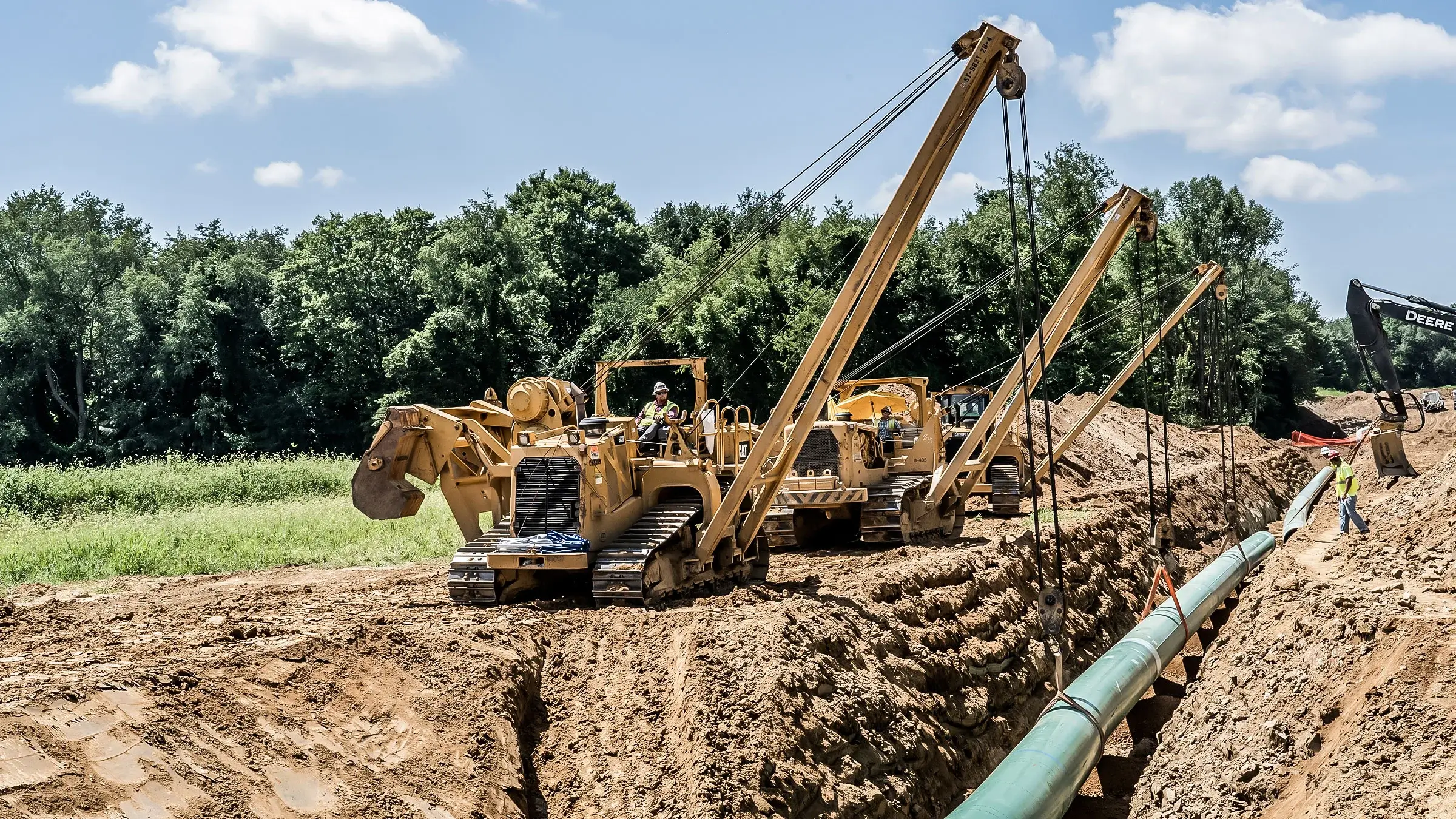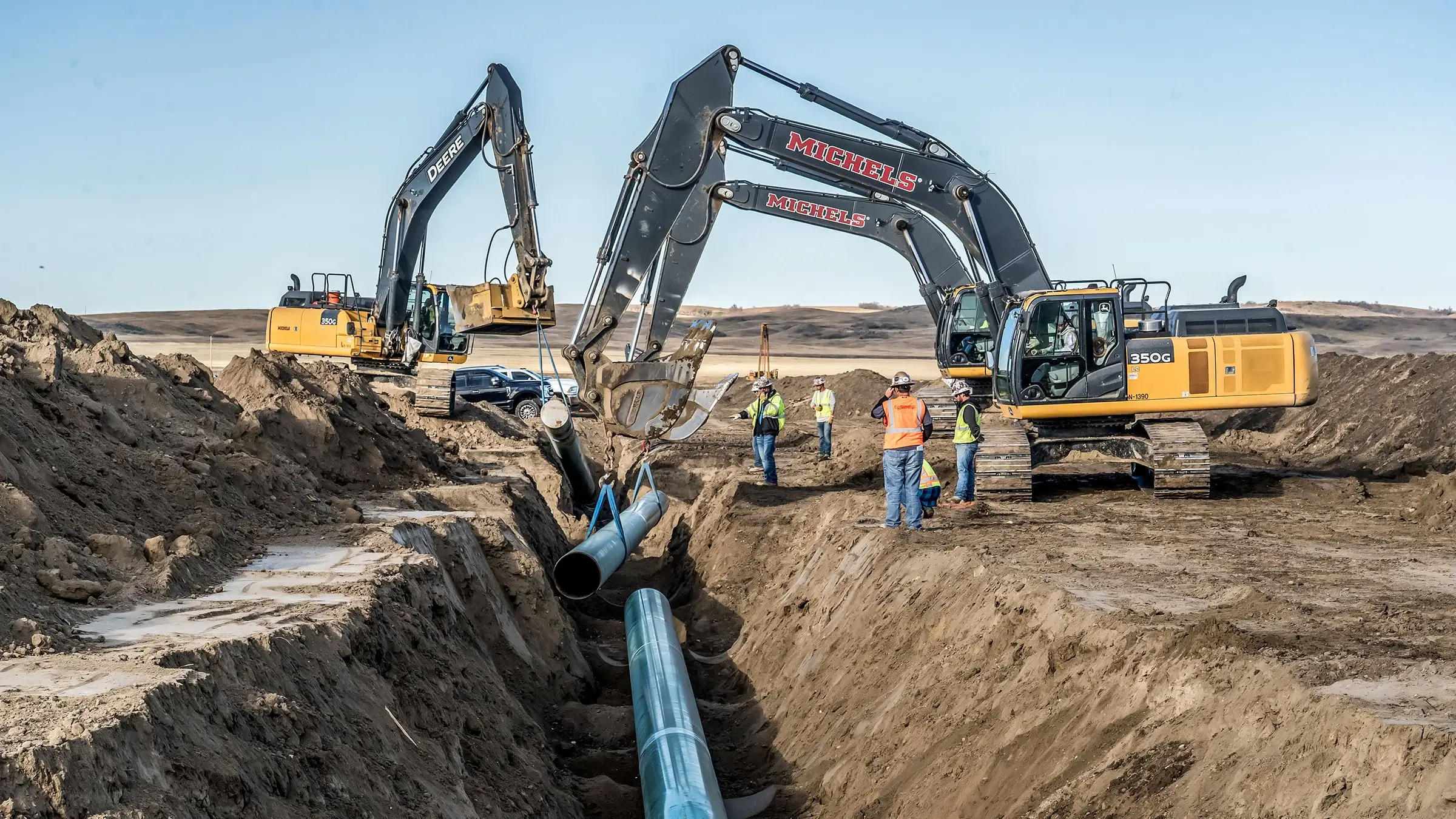Discovering the Latest Technologies in Pipeline Construction Services for Modern Projects
The Pipeline Construction market is undertaking substantial changes. Advancements such as wise products and robotics are reshaping typical methods. These innovations guarantee to improve effectiveness and safety. Furthermore, AI innovations are boosting project administration abilities. As these aspects assemble, they question about their long-lasting influence on sustainability and expense. Comprehending these technologies is essential for stakeholders seeking to browse this evolving landscape. What ramifications do they hold for future tasks?
The Increase of Smart Products in Pipeline Construction
As the demand for a lot more sustainable and effective Pipeline systems enhances, the assimilation of wise products has arised as a transformative remedy in Pipeline Construction. These sophisticated materials have one-of-a-kind buildings that boost the performance and longevity of pipes. Self-healing polymers can automatically fix small leaks, significantly lowering upkeep costs and downtime. In addition, products embedded with sensing units can check architectural stability and environmental conditions, allowing for real-time information collection and evaluation.
Additionally, smart products are corrosion-resistant and frequently lightweight, which not only simplifies setup however additionally extends the lifespan of the systems. Their adaptability makes it possible for pipelines to stand up to severe environmental problems, promoting safety and security and reliability. As sectors progressively prioritize sustainability, making use of environment-friendly wise materials contributes to lowered environmental impact. On the whole, the increase of smart products marks a significant shift in Pipeline Construction, leading the way for ingenious options to satisfy contemporary framework needs.
Developments in Robotics for Installment and Maintenance
The combination of wise materials in Pipeline Construction is complemented by advancements in robotics, which are reinventing setup and maintenance procedures. Robot modern technologies, such as automated welding systems and drones, enhance performance and accuracy, lowering human error and lessening security threats. These robotics can run in difficult atmospheres, making sure that installments are conducted in hazardous or remote areas without placing workers at risk.
Robotic inspection tools furnished with sophisticated sensors provide real-time information on Pipeline stability, enabling for positive upkeep. They can discover leaks or architectural weak points, making it possible for prompt interventions that extend the lifespan of Pipeline systems. The usage of robotics not only increases the Construction timeline but also enhances source allotment, resulting in set you back financial savings. As these modern technologies continue to progress, they are readied to play a crucial function fit the future of Pipeline Construction, guaranteeing integrity and sustainability in infrastructure advancement.
AI-Driven Task Administration Devices Changing Workflow
AI-driven task monitoring devices are reshaping process in Pipeline Construction by improving decision-making processes through enhanced access to real-time information analytics. These devices enable groups to react promptly to job developments, thus increasing efficiency. Furthermore, structured interaction channels foster cooperation among stakeholders, additionally enhancing task end results.
Boosted Decision-Making Processes

Real-Time Information Analytics
Utilizing real-time information analytics, modern-day task monitoring tools change workflow in Pipeline Construction. These innovative devices take advantage of fabricated knowledge to provide instantaneous insights right into task efficiency, resource allocation, and potential dangers. By continually checking key performance indicators, groups can quickly adapt to altering conditions, maximizing labor and materials usage. The assimilation of real-time information enables even more educated decision-making, minimizing hold-ups and decreasing prices. Additionally, anticipating analytics can determine fads and forecast difficulties before they rise, boosting total job efficiency. As a result, Pipeline Construction business that embrace these AI-driven tools can boost job timelines and results, guaranteeing they continue to be competitive in an increasingly complex sector landscape. This technology marks a significant shift toward data-centric administration techniques.
Structured Communication Channels
Reliable interaction is extremely important in Pipeline Construction, where various stakeholders should collaborate flawlessly to guarantee project success. The introduction of AI-driven project management devices has actually reinvented interaction networks within the sector. These tools assist in real-time details sharing, enabling teams to access updates, share papers, and track development successfully. By automating regular tasks and providing a centralized platform for interaction, these advancements eliminate misunderstandings and lower delays. Improved exposure right into project timelines and source allotment fosters liability among staff member. In addition, AI analytics can determine potential interaction gaps, ensuring positive problem-solving. Eventually, streamlined interaction networks not just enhance process however also boost overall project performance, enabling Pipeline Construction firms to satisfy modern-day demands effectively.
Enhanced Safety And Security Procedures Through Modern Technology Combination
The combination of technology in Pipeline Construction has led to boosted security protocols. Real-time monitoring systems, wearable safety look at here tools, and automated danger assessments are currently essential components in minimizing risks on task websites. These innovations not only improve worker security however also improve compliance with industry guidelines.
Real-Time Tracking Equipments
How can real-time surveillance systems transform Pipeline Construction security protocols? By incorporating advanced technology, these systems give continuous security of Construction activities, making sure immediate detection of prospective dangers. Sensing units and cams can keep track of ecological problems, tools efficiency, and workforce movements, providing vital data in genuine time. This aggressive method enables task supervisors to recognize risks before they intensify, considerably boosting safety and security steps on-site. Additionally, real-time surveillance facilitates conformity with regulative requirements, making certain that security criteria are fulfilled constantly. The capacity to assess information instantaneously supports enlightened decision-making, enabling prompt interventions. Because of this, Pipeline Construction tasks can operate extra successfully while protecting the well-being of workers and minimizing accidents, therefore changing the industry's security landscape.
Wearable Safety Devices
Regularly, wearable safety and security gadgets are being integrated right into Pipeline Construction to enhance security procedures. These innovative devices, consisting of clever headgears, vests, and wristbands, are developed to keep an eye on worker wellness and ecological conditions in real-time. Equipped with sensing units, these devices can discover threats such as poisonous gas exposure, too much heat, or high noise levels, supplying instant signals to supervisors and workers. Furthermore, wearable innovation often consists of general practitioner monitoring attributes, enabling effective place surveillance of workers on-site. This ability not only aids in quick response throughout emergency situations however likewise improves general job administration. By prioritizing worker safety through technology combination, Pipeline Construction business are making considerable strides in minimizing crashes and promoting a society of security within the market.

Automated Threat Assessments
While conventional danger evaluations commonly rely upon hand-operated analyses, the integration of computerized threat analysis modern technologies is transforming security protocols in Pipeline Construction. These advanced systems leverage information analytics, expert system, and device learning to identify possible hazards more accurately and effectively. By continuously checking ecological conditions, tools condition, and employee habits, automated assessments offer real-time insights that boost decision-making. This positive approach lowers the chance of mishaps and improves compliance with safety and security regulations. Furthermore, automated risk analyses can be upgraded promptly, making certain that all stakeholders have accessibility to the most current details. Therefore, Pipeline Construction projects take advantage of a safer work environment, reducing interruptions and cultivating a culture of security with modern technology combination.
Lasting Practices in Pipeline Construction
As the need for power framework climbs, the Pipeline Construction industry increasingly prioritizes sustainable practices that reduce environmental impact. Business are embracing green products and advanced Construction techniques to reduce their carbon footprint. The usage of trenchless modern technology enables for Pipeline installation with very little disruption to the surrounding setting, maintaining natural habitats and minimizing soil erosion.
Furthermore, the implementation of renewable resource resources, such as solar or wind, to power Construction activities is obtaining grip. This change not only reduces dependence on nonrenewable fuel sources yet likewise enhances the general sustainability of Pipeline projects. In addition, effective waste monitoring methods, consisting of recycling and recycling materials, are coming to be standard in the sector.
Real-Time Monitoring and Anticipating Maintenance Solutions
The shift towards lasting practices in Pipeline Construction has led the way for the integration of real-time surveillance and predictive maintenance remedies. These technologies take advantage of advanced information and sensors analytics to continually evaluate Pipeline integrity and operational effectiveness. By accumulating information in actual time, operators can detect anomalies such as leaks or pressure decreases before they intensify right into significant concerns. This proactive approach not only reduces environmental dangers however likewise minimizes downtime and upkeep prices.
Anticipating upkeep employs algorithms to forecast potential failures based on historic information and existing efficiency metrics. This allows timely interventions, enhancing maintenance schedules and source allocation. In general, real-time tracking and predictive maintenance solutions stand for a significant development in Pipeline Construction, improving security and dependability while supporting sustainability goals. As sectors proceed to accept these developments, the operational landscape of Pipeline monitoring is established to progress considerably, making sure long-term viability and performance.
The Duty of Drones in Evaluating and Evaluation
Drones have arised as transformative tools in the surveying and examination of pipelines, offering boosted efficiency and precision. Their capability to capture high-resolution photos and videos from numerous angles enables extensive assessments of Pipeline stability without running the risk of human safety. Furnished with advanced sensing units and thermal imaging abilities, drones can spot leakages, rust, and structural abnormalities that may not show up to the nude eye.
Moreover, the deployment of drones considerably decreases examination time, enabling quicker decision-making for upkeep and repairs. This efficiency equates to set you back financial savings and minimal interruption to bordering atmospheres. Drones can additionally access hard-to-reach areas, such as elevated frameworks or sturdy terrains, additionally visit this site increasing the scope of examinations.
As the Pipeline industry remains to welcome technical improvements, the integration of drones into checking and inspection processes is expected to grow, establishing new requirements for functional quality and safety and security in Pipeline Construction solutions.
Regularly Asked Questions
What Are the Costs Connected With Modern Pipeline Construction Innovations?
The look at this web-site prices linked with modern Pipeline Construction developments often include sophisticated products, specialized labor, and cutting-edge innovation. These aspects add to greater initial financial investment, but can result in long-term savings via boosted efficiency and lowered upkeep requirements.
How Do Regulatory Adjustments Effect Pipeline Construction Technologies?
Regulative changes considerably influence Pipeline Construction modern technologies by requiring the adoption of more secure, a lot more effective methods. Conformity requirements frequently drive innovation, causing developments in products, style, and Construction techniques that boost general task sustainability and security.
What Skills Are Needed for Occupations in Advanced Pipeline Construction?

Occupations in advanced Pipeline Construction need proficiency in design concepts, project administration, security procedures, and environmental policies. Additionally, skills in innovation assimilation, teamwork, and analytical are important for passing through the complexities of modern-day framework projects.
How Can Business Make Sure Conformity With Environmental Criteria?
To ensure conformity with ecological criteria, firms should implement rigorous training programs, conduct regular audits, and adopt best methods in sustainability. Engaging with stakeholders and checking governing adjustments better reinforces their commitment to ecological stewardship.

What Are the Key Obstacles Dealing With Pipeline Construction Today?
The key obstacles facing Pipeline Construction today consist of regulatory conformity, ecological issues, varying product expenses, labor lacks, and the requirement for advanced innovation integration (Pipeline Construction Services). These factors complicate project timelines and total performance in the sector
As the need for a lot more lasting and reliable Pipeline systems boosts, the assimilation of smart materials has actually arised as a transformative remedy in Pipeline Construction. AI-driven task monitoring devices are reshaping process in Pipeline Construction by improving decision-making processes through improved accessibility to real-time information analytics. While job administration in Pipeline Construction has generally depended on manual processes, the assimilation of innovative tools substantially boosts decision-making abilities. Taking advantage of real-time data analytics, modern project management devices revolutionize workflow in Pipeline Construction. Occupations in innovative Pipeline Construction need competence in engineering concepts, job management, security protocols, and ecological policies.